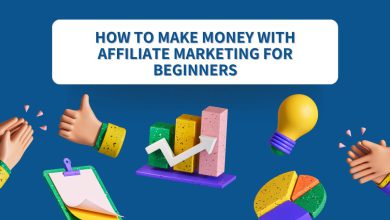
Launching a new product is an exciting yet challenging endeavor. A successful product launch can move your business ahead. It can create a lot of buzz and boost sales. However, without a good plan, a product launch can fall flat. It can also fail to meet its goals. Here’s a full guide on how to create a successful product launch plan. It will ensure your new product makes a big impact.
1. Define Your Goals and Objectives
The first step is to set your goals and objectives. This is for a product launch plan. What do you hope to achieve with this launch? Your objectives might include:
- Generating a specific amount of revenue within the first quarter
- Gaining a certain number of new customers or users
- Increasing brand awareness and market share
- Receiving positive media coverage and reviews
- Establishing the product’s position in the market
Clear goals will guide your planning. They will also provide a benchmark for measuring success.
2. Conduct Market Research
Understanding the market landscape is crucial for a successful product launch. Conduct thorough market research to identify your target audience, their needs, and preferences. Analyze your competitors to understand their strengths and weaknesses. This research will help you position your product well. It will help you develop a strong value proposition. This will set it apart from competitors.
3. Develop a Unique Value Proposition
Your product has a unique value proposition (UVP). It sets your product apart from the competition. It’s the primary reason customers should choose your product over others. Your UVP should clearly articulate the benefits and value your product offers. Make sure it addresses the pain of your target audience. Also, highlight the unique features and advantages of your product.
4. Create a Detailed Launch Timeline
A well-structured timeline is essential for keeping your product launch on track. Break down the entire launch process into manageable phases, each with specific tasks and deadlines. A typical product launch timeline includes:
- Pre-Launch (6-12 months before launch): Conduct market research, finalize product development, and develop a marketing strategy.
- Planning (3-6 months before launch): Create promotional content, reach out to influencers and media, and plan launch events.
- Preparation (1-3 months before launch): Finalize marketing materials, train sales teams, and start pre-launch promotions.
- Launch (Launch Day): Execute the launch event, release the product, and initiate major marketing campaigns.
- Post-Launch (1-3 months after launch): Gather feedback, analyze performance, and adjust strategies as needed.
5. Build a Cross-Functional Team
A successful product launch requires collaboration across various departments. Form a team with members from many departments. It should include product development, marketing, sales, customer service, and finance. Each team member should have a clear understanding of their roles and responsibilities. Constant dialogue and teamwork synchronize every launch detail, promising flawless rollout.
6. Develop a Comprehensive Marketing Strategy
Your marketing strategy is critical to generating buzz and driving interest in your product. It should encompass multiple channels and tactics to reach your target audience effectively. Key components of your marketing strategy should include:
- Content Marketing: Create engaging content such as blog posts, videos, infographics, and case studies that highlight the benefits and features of your product.
- Social Media Marketing: Leverage social media platforms to create anticipation and engage with your audience. Use teasers, behind-the-scenes content, and countdowns to build excitement.
- Email Marketing: Develop an email campaign to keep your audience informed and engaged throughout the pre-launch and launch phases. Personalize your messages to different segments of your audience.
- Influencer Marketing: Partner with influencers and industry experts who can endorse your product and reach a broader audience.
- Public Relations: Write press releases and pitch your product to media outlets for coverage. Arrange interviews and product reviews with key journalists and bloggers.
- Advertising: Use paid advertising channels such as Google Ads, social media ads, and display ads to increase visibility and drive traffic to your product landing page.
7. Create Compelling Launch Content
High-quality content is essential for showcasing your product and communicating its value. Develop a variety of content types to appeal to different segments of your audience. This can include:
- Product Videos: Create engaging videos that demonstrate your product’s features, benefits, and use cases.
- Blog Posts: Write informative blog posts that address common pain points and explain how your product provides a solution.
- Infographics: Design visually appealing infographics that highlight key statistics, features, and benefits.
- Case Studies: Share success stories and testimonials from beta testers or early adopters.
- Webinars: Host live webinars to provide in-depth demonstrations and answer questions from potential customers.
8. Optimize Your Website and Landing Pages
Your website and landing pages are critical touchpoints for potential customers. Ensure that they are optimized for a seamless user experience and conversion. Key elements to focus on include:
- Product Pages: Create detailed product pages with high-quality images, descriptions, and specifications.
- Landing Pages: Design dedicated landing pages for your launch campaigns with clear calls-to-action (CTAs) and lead capture forms.
- SEO: Optimize your website and content for search engines to increase organic visibility.
- Mobile Optimization: Ensure that your website is mobile-friendly and provides a smooth experience on all devices.
9. Plan and Execute Pre-Launch Activities
Building anticipation before the launch can significantly boost your product’s success. Implement pre-launch activities to generate excitement and engage with your audience. These can include:
- Teaser Campaigns: Release teasers and sneak peeks of your product on social media and email newsletters.
- Beta Testing: Offer a beta version of your product to a select group of users and gather feedback to make improvements.
- Exclusive Pre-Orders: Allow customers to pre-order your product before the official launch date.
- Contests and Giveaways: Run contests and giveaways to create buzz and attract potential customers.
10. Launch Day Execution
Launch day is the culmination of all your hard work and planning. Ensure everything is in place for a smooth execution. Key activities for launch day include:
- Launch Event: Host a launch event, either physical or virtual, to introduce your product to the world. Invite media, influencers, and key stakeholders.
- Press Releases: Distribute press releases to major media outlets and industry publications.
- Social Media Blitz: Launch a coordinated social media campaign with posts, live videos, and interactions to engage with your audience in real time.
- Email Blast: Send out a launch announcement email to your entire mailing list.
11. Post-Launch Activities
After the launch, it’s important to maintain momentum and continue engaging with your audience. Key post-launch activities include:
- Customer Support: Provide excellent customer support to address any issues or questions from new users.
- Feedback Collection: Gather feedback from customers to understand their experiences and identify areas for improvement.
- Performance Analysis: Analyze the performance of your launch activities against your goals and objectives. Identify what worked well and what didn’t.
- Continuous Marketing: Continue marketing efforts to sustain interest and drive long-term success. This can include follow-up emails, additional content, and ongoing social media engagement.
Conclusion
Creating a successful product launch plan requires careful planning. It needs strategic thinking and seamless execution. By setting clear goals. And by doing thorough market research. And by creating a full marketing strategy. You can ensure that your product launch has a big impact. Create excitement beforehand, deliver a smooth launch, and sustain interest afterward. A well-executed launch plan can help your new product reach its full potential. It can also drive meaningful results for your business.




